Are you wondering how to check if Google Analytics is working on your website and looking for a Google Analytics checker tool? Or perhaps you’re not sure if the data Analytics is tracking is accurate?
Google Analytics is a powerful tool for measuring your site’s performance and gathering a lot of incredibly useful information about your visitors.
However, if it’s not set up correctly, then you won’t be able to gather the data you need to grow your business. So, it’s important to make sure that Google Analytics is working properly.
In this article, we’ll give you 5 ways to check if Google Analytics is working, including multiple Google Analytics checker tools:
- Check Your Google Analytics Data Stream
- Check Web Traffic in Realtime Reports
- Use the Google Tag Assistant Tool
- View the Analytics Tracking Code in the Source Code
- Get Accurate Data by Excluding User Roles from Tracking
1. Check if Google Analytics Code is Receiving Data
The first and most popular way to check and see if your Google Analytics is working and installed correctly is to look inside your Google Analytics admin.
To check if your Google Analytics stream is receiving data, head to the Admin cog and then the Data Streams settings:
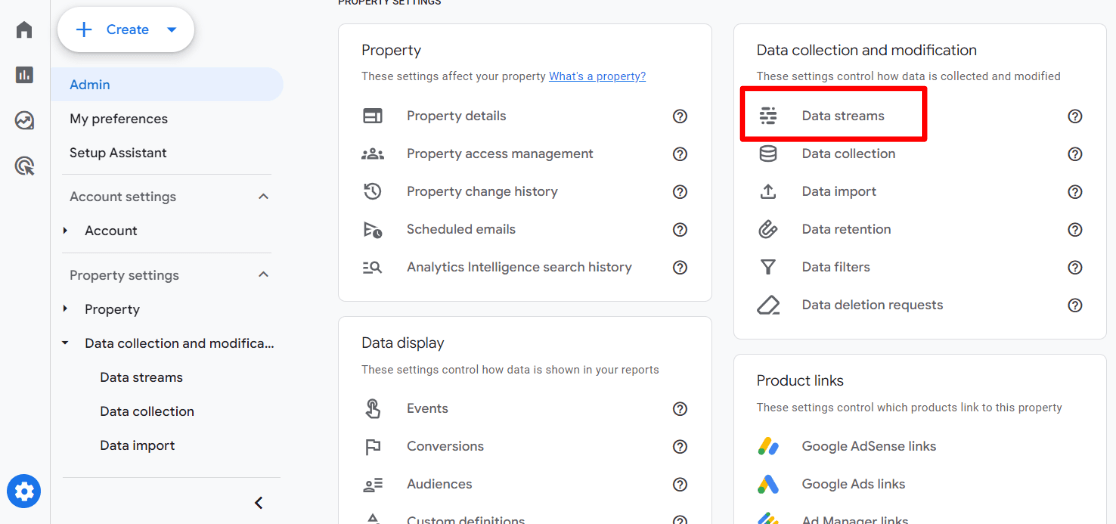
Now, click into your data stream:
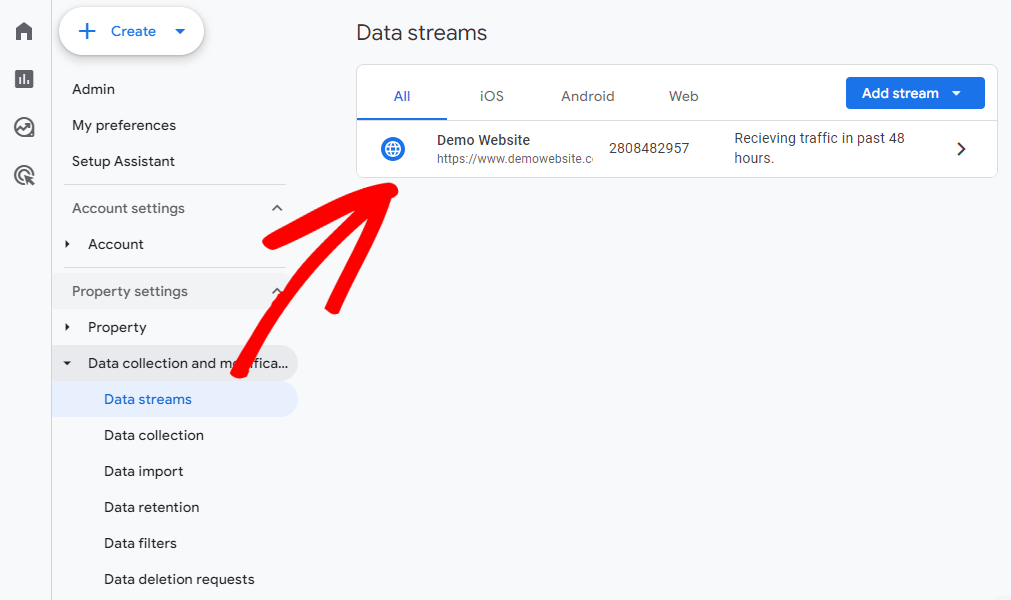
You’ll see right at the top of the data stream page whether or not it’s receiving data:

2. Check Web Traffic in Realtime Reports
When you first set up Google Analytics, it takes 24 to 48 hours for the reports to start showing your website traffic. However, if you look at the real-time report, you can see if Analytics is working properly almost instantly.
This is the easiest and quickest way to verify that you’ve correctly set up Google Analytics. Just note that your test traffic may not show up instantly — the realtime report shows traffic in the last 5 minutes and the last 30 minutes.
To access your realtime reports, open your Google Analytics 4 property and navigate to Reports » Realtime:
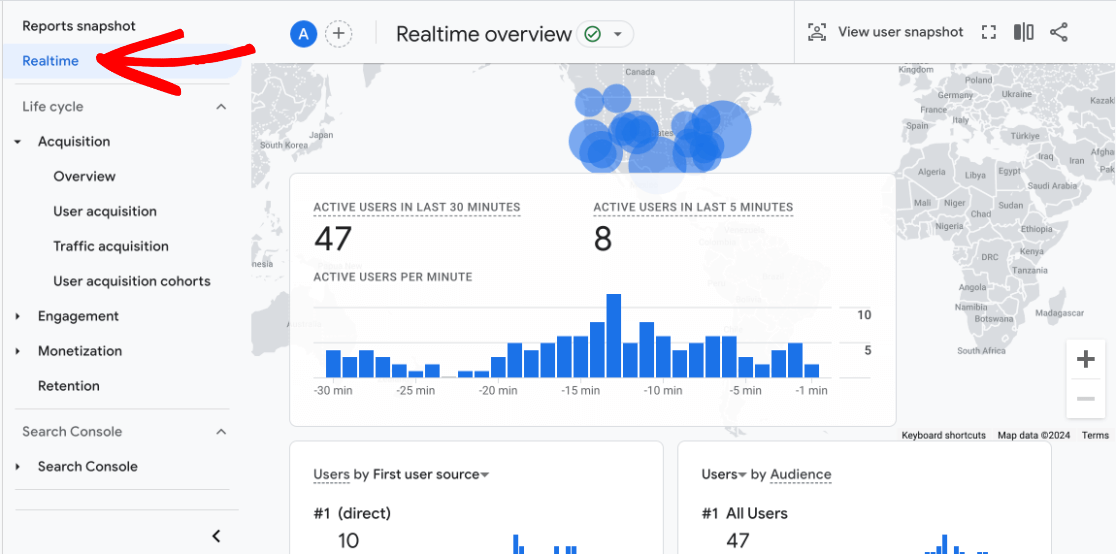
Or, if you’re using MonsterInsights, the best Google Analytics plugin for WordPress, you can view real-time reports right inside your WordPress dashboard.
Once MonsterInsights is installed and connected with Google Analytics, just go to Insights » Reports and click on the Realtime tab. Now, if you see there are active users on your site, then it means Google Analytics is tracking your visitors.
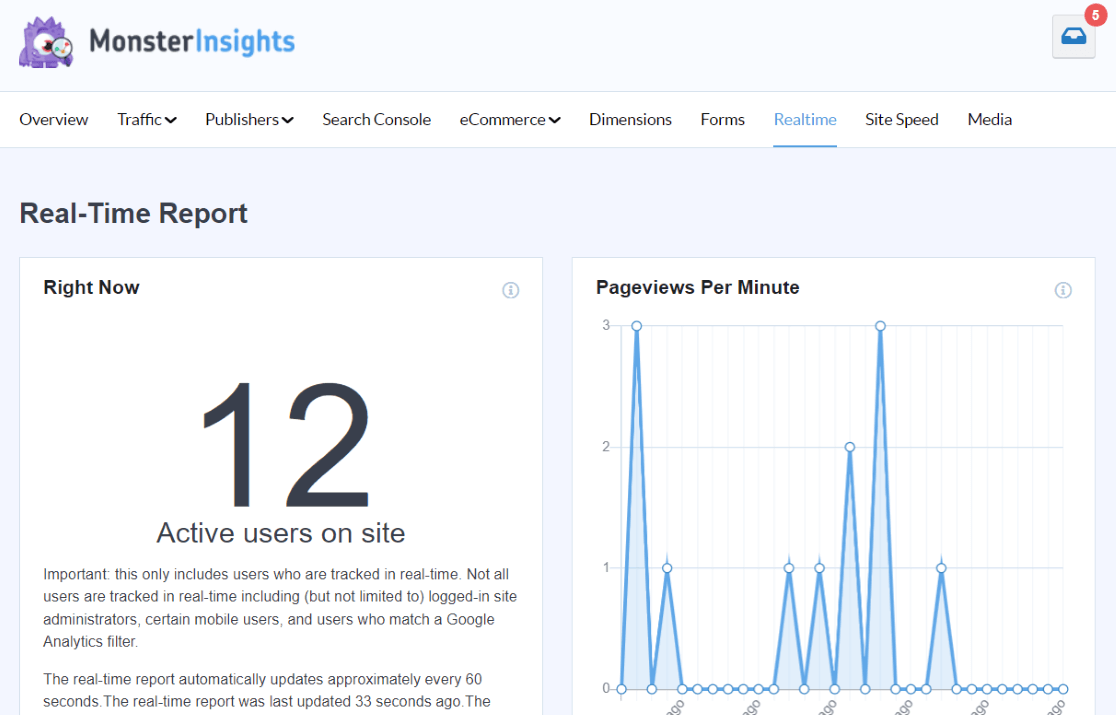
3. Use the Google Tag Assistant Tool
While the Realtime report can tell you if data is being tracked, it sometimes can’t tell you everything you need to know about your tracking setup. For example, it can’t really tell you if you have duplicate tracking tags.
To check your website for duplicate tags and watch to see events firing, you can use the Google Tag Assistant tool. It’s one of the best Google Analytics checker tools, and it’s totally free. To use it, open tagassistant.google.com.
Now, you can either add a domain to start debugging it right away, or you can install the Tag Assistant Companion browser extension in Chrome to debug anytime without visiting the Tag Assistant website.

We’ll go ahead and click the Add domain button to assess a domain:
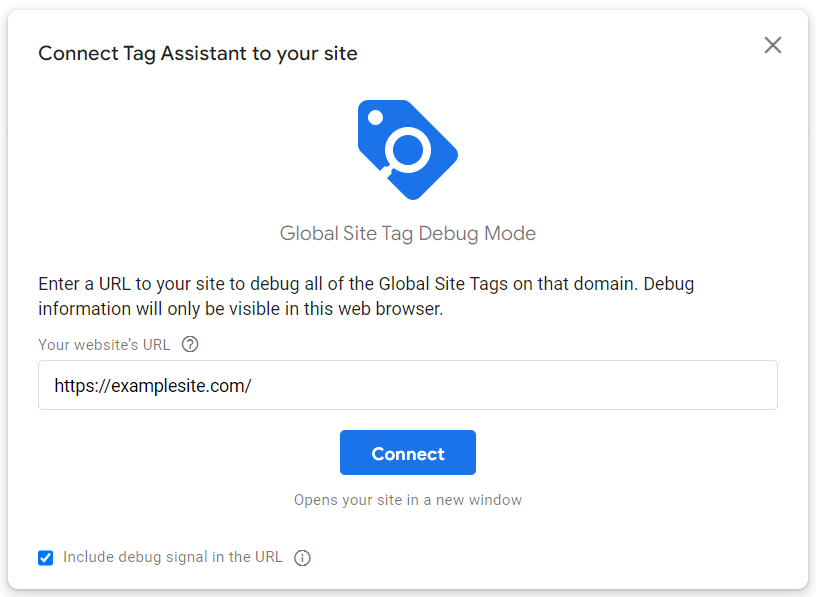
When you click Connect, the website you want to see tags for will open in a new window. Leave that window open, but navigate back to Tag Assistant to check and see the tags you have installed:
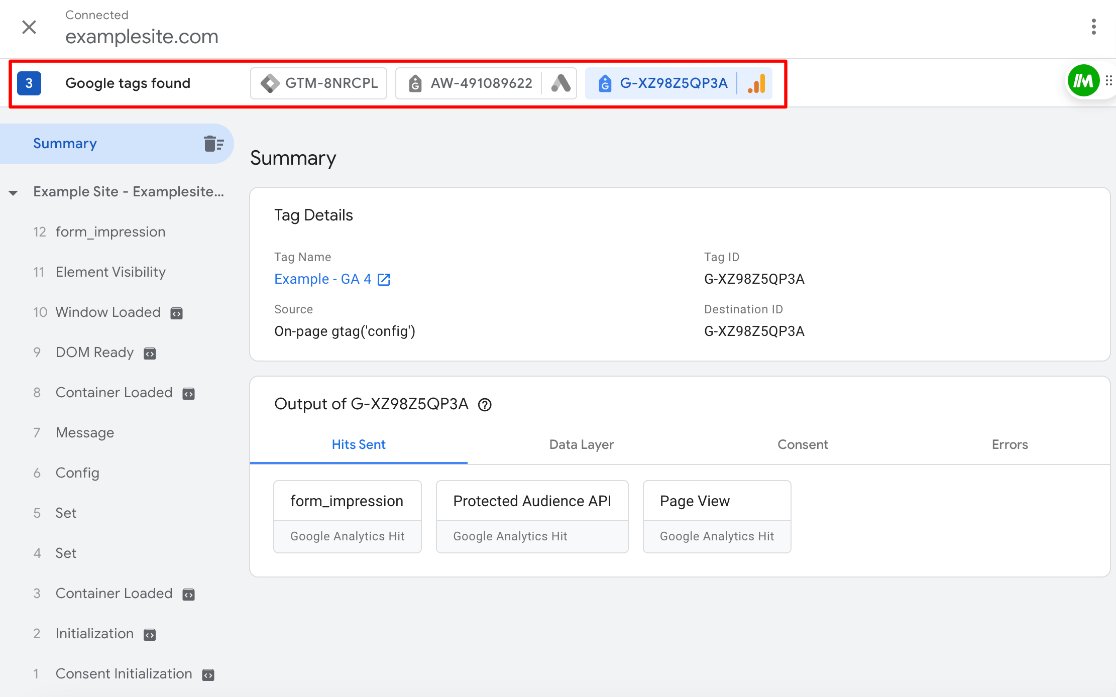
As you can see in our screenshot, the example website has a Google Analytics tag, a Google Ads tag, and a Google Tag Manager container. No duplicates!
4. View the Analytics Tracking Code in Your Source Code
Another simple way to verify that Google Analytics is working on your website is to view the source code and look for your tracking code. This option works best for someone who’s somewhat familiar with code.
To start, you can use a keyboard shortcut to view the source code of your site. If you’re on Windows or Linux, press Ctrl + U to view the source code. If you’re on Mac, press Command + U.
Alternatively, you can right-click anywhere on the page and click the View page source option. The wording may be slightly different depending on your web browser.
Here’s what the Google Analytics code will look like if you’re using gtag.js:
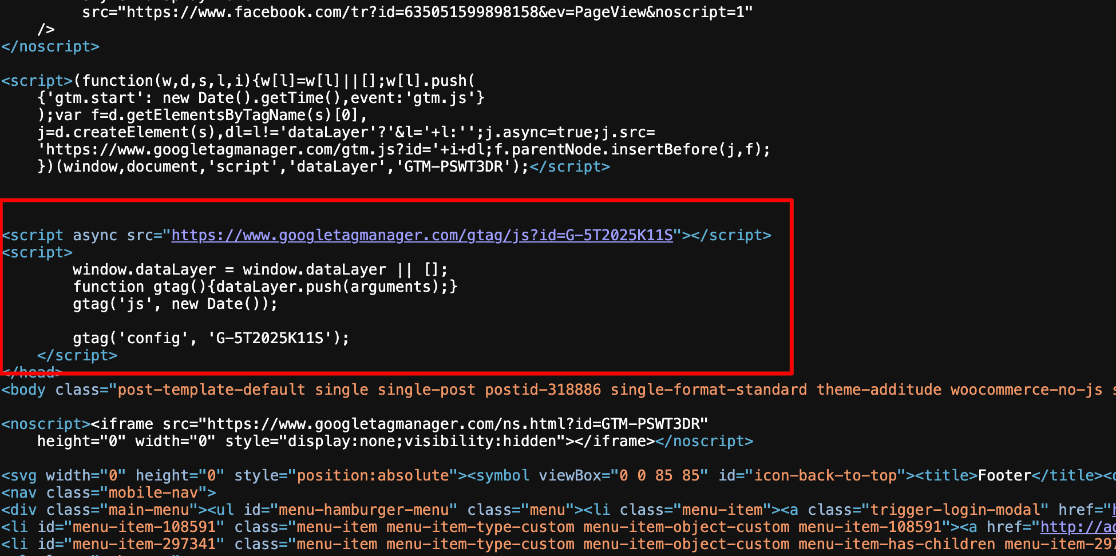
If you see this code present in your source code, then it means Google Analytics is installed on your site. If you see the code, we suggest opening your Realtime report to see if data is coming in correctly.
5. Get Accurate Data by Excluding User Roles from Tracking
Now that you know how to check if your Google Analytics tracking code is working correctly on your website, you should also ensure that you don’t skew your Analytics data when you visit your site yourself.
If you’re using MonsterInsights on WordPress, not only are admins automatically excluded from tracking, but you can also easily exclude different user roles from being tracked in Google Analytics (as long as they’re logged into WordPress). That way, your own team’s traffic won’t skew your data.
To exclude users from tracking, simply go to Insights » Settings and then click the Advanced tab. Then, scroll down to Exclude These Users Roles From Tracking and add user roles that you don’t want to track in Analytics.
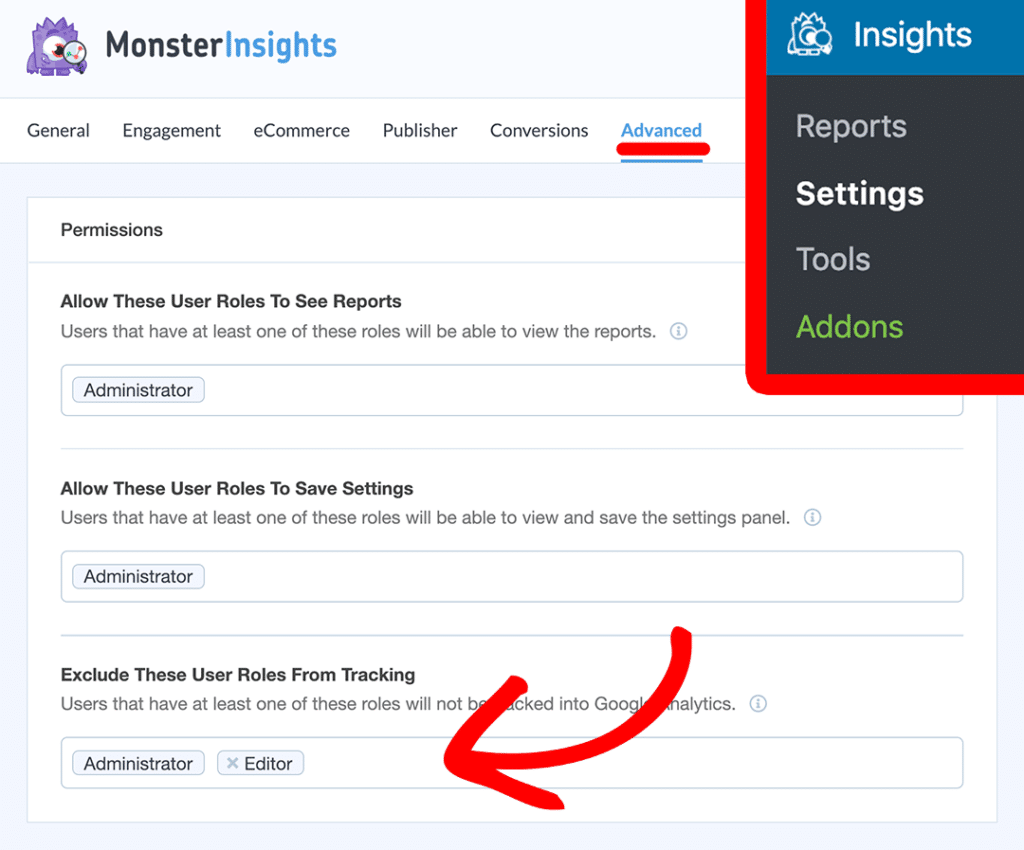
For more detail, check out our guide on how to stop Google Analytics from tracking logged in users in WordPress.
And that’s it! We hope this article helped you learn how to check if Google Analytics is working on your site.
You might also want to check out:
Google Analytics Not Working: 13 Common Errors & How to Fix Them
MonsterInsights vs. Google Analytics – What’s the Real Difference?
How to Set Up Google Analytics Link Click Tracking
Finally, don’t forget to follow us on YouTube for more helpful Google Analytics tips.
